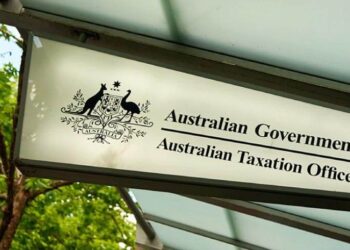From 1 October 2021, SuperStream will become mandatory for all self-managed super funds to rollover super to or from their funds.
In a recent update, SuperConcepts senior technical specialist Anthony Cullen said when dealing with SMSF rollovers and release authorities in SuperStream V3.0, it will be important for advisers to be well prepared across the entire process as coordination and collaboration between various parties is going to be key.
When requesting a rollover, whether the member is rolling in or out of an SMSF, the member must initially make a request for the rollover to occur. Mr Cullen said the request can be made with either the transferring or the receiving fund, and in many cases will start with the ATO via the member’s myGov account.
“An Electronic Portability Form (EPF) can be lodged with the ATO via the member’s myGov account. The ATO will verify the member’s identity and membership details before sending the rollover request to the transferring fund,” he said.
“Alternatively, paper requests can be lodged directly with either fund involved in the process using an ATO approved form (NAT 75359). Before a rollover can occur, the trustees will need to engage in a verification process.
“The options mentioned above are only designed to deal with ‘whole of balance’ rollovers. For partial rollovers, the member must contact the fund directly to determine what the process is.
“Other exceptions to SuperStream include, but are not limited to, in-specie transfers, internal rollovers and amendments or cancellations to rollovers already requested.
When it comes to the verification of a member, the SMSF then faces certain checks and balances included within the SuperStream system that will need to be attended to prior to a rollover being made, according to Mr Cullen.
Where payments are being made to an SMSF (regardless of whether the transferring fund is an APRA fund or SMSF), the transferring fund must use the SMSF Verification Service (SVS) available via the Standard Business Reporting platform to verify certain information such as the receiving fund’s complying status and that the TFN of the individual is associated with the SMSF.
Furthermore, it needs to make sure the SMSF bank details are recorded with the ATO along with the SMSFs Electronic Service Address (ESA).
“Using the SVS will trigger an ATO alert to the relevant member. If they have requested the rollover there is nothing for the member to do. However, if they have not instigated the rollover, they may want to contact their existing fund to investigate further,” Mr Cullen noted.
“Verification of details related to transfers from SMSFs to APRA funds will occur in a similar fashion. They will be via the Fund Validation Service (FVS), also run through the Standard Business Reporting platform. This is designed to check similar and necessary information connected to the receiving fund in order to process the rollover.
“In addition to these checks, the SMSF member’s TFN must also be validated with the ATO prior to the rollover occurring. Although this is also done through the Standard Business Reporting platform, it is a different process to the above which is more about verifying the receiving fund details.”
SMSF trustees will need to engage the SMSF Member TFN Integrity Check Service, otherwise known as SMSFmemberTick. This process is required, even though many will argue that the member and trustee are one in the same person and they should know their own TFN details.
“These processes will help enhance protection of member interests and reduce the possibility of fraud and illegal early access,” Mr Cullen explained.
“These steps can only be processed through digital service providers, such as SuperMate, that are SuperStream ready. Most trustees and advisers are unlikely to have access to such programs. The majority of accountants and administrations who use dedicated software programs will be in a position to assist with these steps.
“Historically, the earlier stages of preparing for a rollover did not involve much input from accountants and administrators (other than possibly getting the fund accounts up to date). Going forward they will need to be more heavily involved in the process from an earlier stage.”
Managing release authorities and timeframes
When dealing with release authorities, the ATO will use SuperStream to issue release authorities to SMSFs that are SuperStream ready. Mr Cullen observed this will include any fund that has its accounts prepared in a dedicated software program that is SuperStream compliant.
Funds that are not SuperStream ready will continue to receive release authorities via the current method.
Release authorities that will be covered include the first homeowner’s super saver scheme, excess concessional and non-concessional contributions, excess non-concessional contribution tax and Division 293. There will be no changes to how the ATO issues the initial determinations to members/individuals.
As superannuation Industry (Supervision) Regulations (SISR) require trustees to rollover benefits as soon as practicable, but not later than three days from receiving the request or receiving further information requested, Mr Cullen noted it will be important to consider the coordination of the timeframe with the SMSF.
“Trustees have five business days to request any missing information relating to a rollover request. Although, they will need to determine if there is missing information earlier than that, as they will need to attend to the rollover within three days if the request is complete. Such missing information may relate to the member and/or the rollover details,” he said.
“There are also timeframes for members to supply requested missing information that if not met can result in the trustee cancelling the rollover request application.
“These timeframes will be applicable to SMSFs as well as APRA funds from 1 October 2021.”
For the typical annual SMSF client that only has their records updated once a year, consideration also needs to be given to when a member may request a rollover out of the fund.
“Otherwise, the member may find that they have put themselves, in their capacity of trustee, in a position that they cannot comply with the strict timeframes,” Mr Cullen continued.
“The reason being is that not having the fund records up to date, and needing information to process the accounts, does not constitute missing information in a SuperStream context.
“Release Authorities must be attended to within 10 days which for SMSFs is a shorter timeframe than previously available.
“SuperStream is about the transfer of benefits and data between funds and/or the ATO. It does not replace any requirement to supply information to the member i.e. a copy of the Rollover Benefit Statement.”



Actually, this is all a huge incentive being created to shift funds offshore. Yes there may be a bit more tax but you slash admin costs.
Laughable over regulation for SMSFs – a sector that is slowly dying, like their members. Just what is wrong with the current position. I thought the public offer funds would be happy to accept cheques from SMSFs as they increasingly wind up. Surely this process will only slow down the outflow from SMSFs to public offer funds.
For partial rollovers, the member must contact the fund directly to determine what the process is. Different rules per fund or some consistency? What a joke.
What does superstream really mean? Just an ESA where documents go in and out and the ATO can track them? Hello Big Brother!